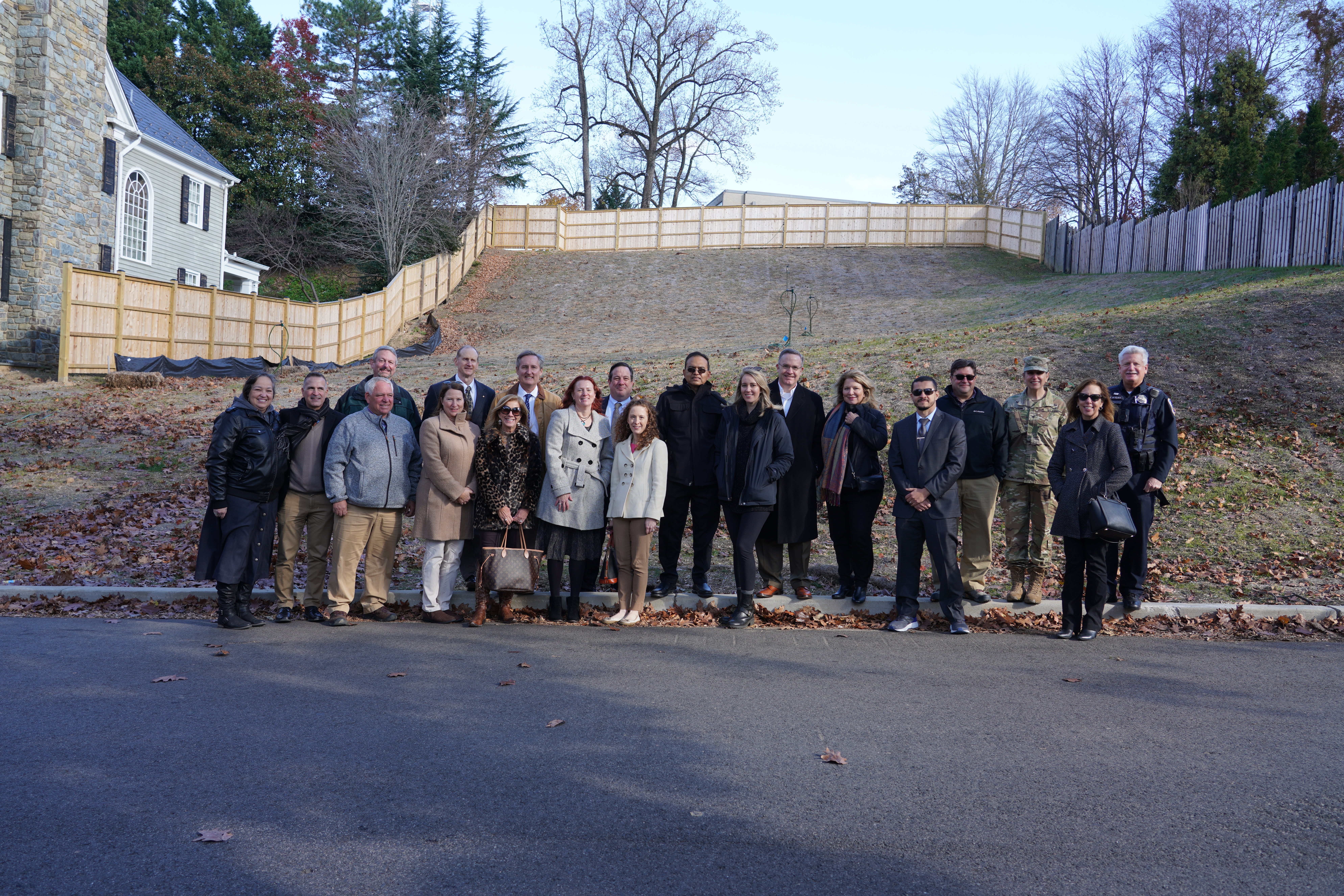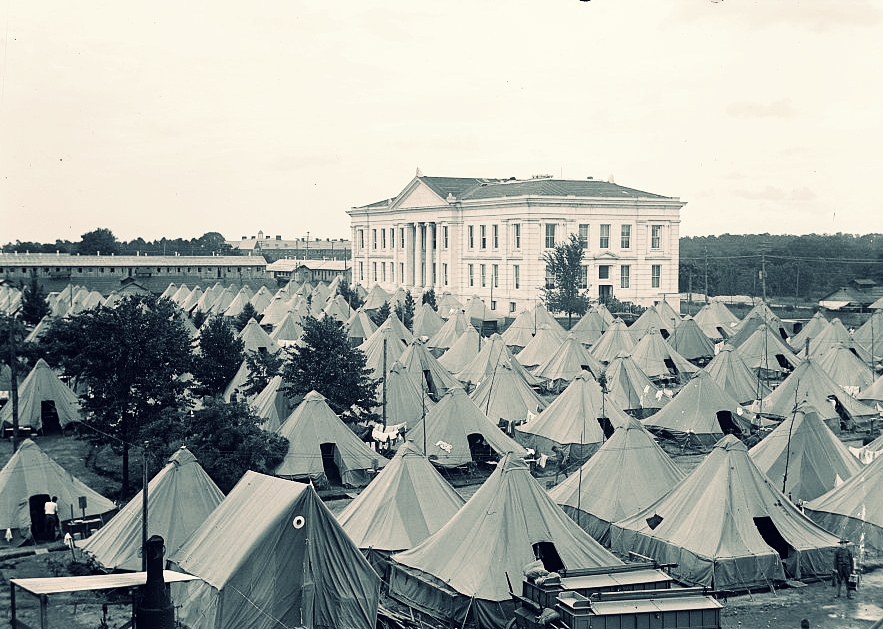WASHINGTON -- The U.S. Army Corps of Engineers (USACE), Baltimore District, marked the completion of the remediation and restoration efforts at the 4825 Glenbrook Road project area, located within the Spring Valley Formerly Used Defense Site in Northwest Washington, D.C., with a closing ceremony on Nov. 23, 2021.
USACE staff, partnering agencies, and contractors gathered at the Washington Aqueduct, located a few miles away from the Glenbrook Road property, to celebrate the historic 20-year milestone within the Baltimore District’s Environmental Restoration program.

USACE staff, partnering agencies, and contractors stand in front of 4825 Glenbrook Road directly following a ceremony marking the completion of remediation and restoration efforts at the Formerly Used Defense Site, located in Northwest Washington, D.C., Nov. 23, 2021.
“This exemplary cross-functional team was tasked to clean up and restore a residential property containing one of the most unique burials of discarded World War I experimental chemical warfare agents known in the U.S.,” said Baltimore District Commander Col. Estee Pinchasin. “Make no mistake - during the war; there was no military research more urgent or secret than what took place in this corner of the District.”
During World War I, the property was part of a larger area known as the American University Experiment Station (AUES), where the U.S. government researched and tested chemical agents, equipment, and munitions. From 1917 to 1918, approximately 1,500 chemists, scientists, and soldiers assembled at AUES to research and develop offensive and defensive capabilities in chemical warfare.

American University Experiment Station, Washington, D.C., 1917. (Library of Congress photo)
When the war ended in 1918, disposal pits and trenches were dug and filled with unwanted and dangerous chemicals and materials and covered over, a standard practice at the time.
Waste material from AUES was rediscovered in 1993 when a developer purchased excess campus acreage along Glenbrook Road.
This discovery kicked off the Environmental Restoration program for Spring Valley FUDS. Many neighborhood areas would come to be investigated and remediated, the most complex of which was the Glenbrook Road burial area.
By the conclusion of the project at 4825 Glenbrook Road in August 2021, the team had remediated, removed, or recovered 556 munition items (23 of them filled with chemical agents), 2,139 pounds of laboratory debris, 53 intact and sealed glass containers of chemical agent, and 7,500 tons of contaminated soil, all close to occupied private properties, a major university campus, and public streets.
“The historic 20-year milestone we celebrate today is a testament to this exemplary team’s development of strong partnerships and dedication to transparency and interactions with stakeholders, all while prioritizing the safety of the local community,” said Pinchasin. “This team’s dedication to hard work will live on for many years to come, contributing to the safety and wellbeing of not only the Spring Valley neighborhood and American University but the Nation Capital Region as a whole.”
The U.S. Army is DOD’s lead agent for the FUDS Program, and USACE executes the FUDS Program on behalf of the U.S. Army.
For more on Spring Valley FUDS and 4825 Glenbrook Road, visit our website at https://www.nab.usace.army.mil/Home/Spring-Valley/.